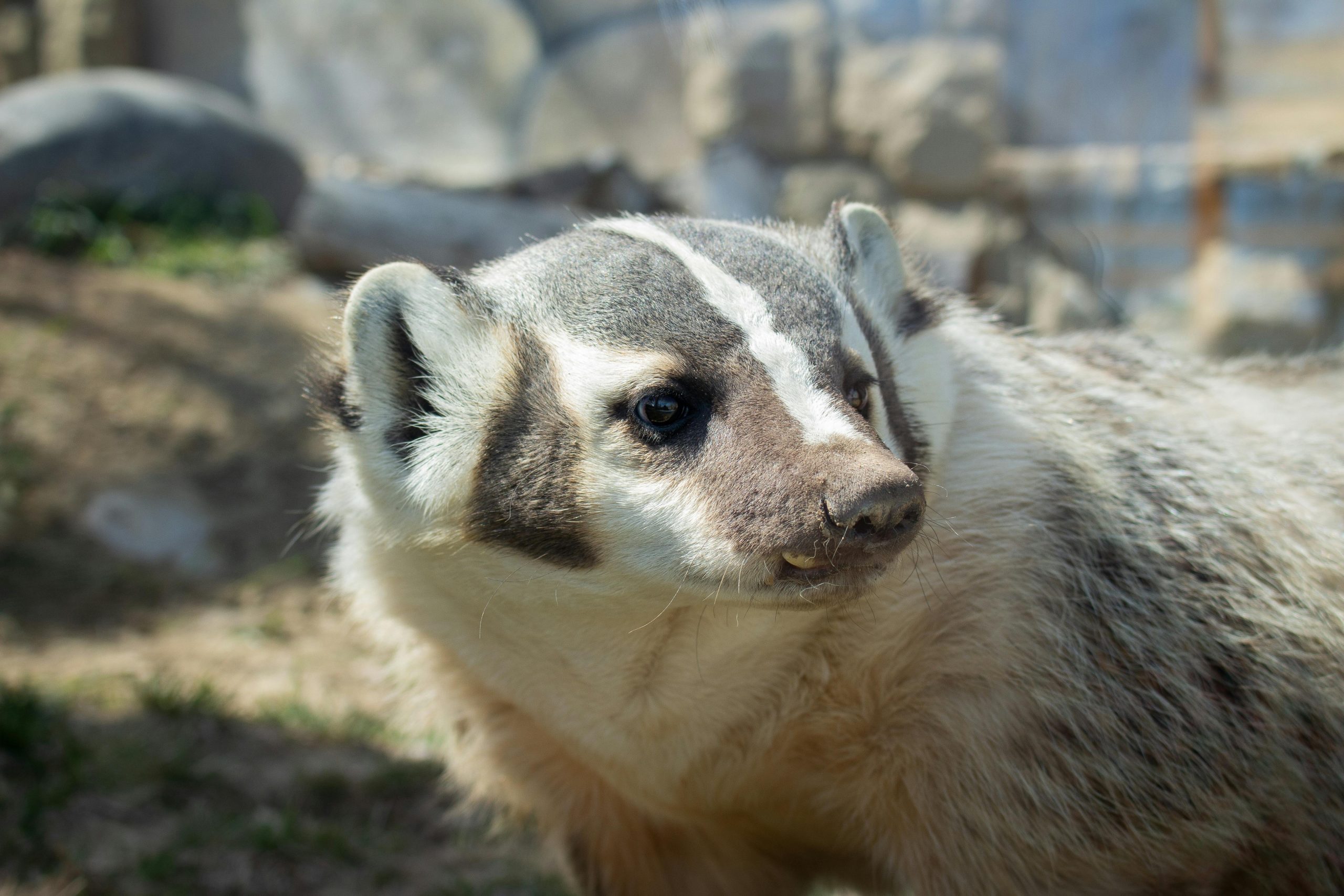🦡 Species: Taxidea taxus
The badger in Wisconsin (and across much of North America) is the American badger—a burly, low-slung, solitary digger with a temper like thunder and claws like chisels. It is not the same as the European badger (Meles meles), which is more social and less savage in its solitary pursuits.
📍 Distribution
Wisconsin isn’t just home to the American badger—it wears it like a badge:
- The state animal of Wisconsin is the badger.
- Not because of abundance alone, but also due to 19th-century lead miners, who lived in hillside dugouts, being nicknamed “badgers.”
They live in:
- Prairies, pastures, and woodland edges.
- Areas with soft soil—perfect for the astonishing digging they do (more on that below).
⚒️ Temperament & Behavior
The American badger is:
- Solitary and mostly nocturnal, though not strictly.
- Tenacious hunters of ground squirrels, gophers, snakes, and even rattlesnakes.
- Known to dig so fast that prey animals are often caught underground before they can escape.
Their aggression is legendary:
- Coyotes often team up with badgers to hunt (the badger digs, the coyote grabs runners).
- But humans trying to trap or rescue them get a brutal surprise—badgers don’t back down.
🌨️ Adaptability to Climate
Wisconsin’s winters can be brutal, but the badger handles it:
- Digs a deep burrow for winter.
- May go into a torpor (light hibernation) in the coldest months.
- Uses its body fat reserves and thick fur to stay warm.
🧬 Compared to Other Badgers
| Trait | American Badger (Taxidea taxus) | European Badger (Meles meles) |
|---|---|---|
| Social? | No | Yes (lives in clans) |
| Burrow? | Deep and complex | Also complex, often communal |
| Diet | Carnivorous (rodents, reptiles) | Omnivorous (worms, fruit, small prey) |
| Temperament | Aggressive, solitary | Social, less confrontational |
| Range | North America (Canada to Mexico) | Europe and parts of Asia |
🌲 So Could They Clash With Kangaroos?
Now here’s a delightful thought: imagine a red kangaroo fleeing through Wisconsin’s brush and accidentally bounding across a badger’s den. The outcome? Likely comic at first, but quickly tense.
- Badgers don’t go looking for a fight, but they won’t move aside for anyone, including a 6-foot hopper.
- Kangaroos would likely avoid confrontation, but if one did try to box a badger… nature would hold its breath.
Would you like a visual comparison of the American badger vs. its European cousin—or perhaps a mock field guide entry combining sightings of kangaroos and badgers in a “Wisconsin Cryptid Watch”?




What a fascinating look at Wisconsin’s iconic American badger! It’s intriguing to see how the behavior and characteristics of the American badger contrast so starkly with its European counterpart. I particularly appreciate the tongue-in-cheek comparison with kangaroos—what a unique thought experiment!
Consider discussing the ecological role that badgers play in their environment. As tenacious hunters, they help control populations of rodents and other small mammals, which can prevent overgrazing and contribute to a balanced ecosystem. The symbiotic relationship with coyotes is also a fantastic example of how species can work together in nature, showcasing a dynamic system of predator-prey relationships.
Also, it would be interesting to explore how urbanization and land-use changes in Wisconsin are affecting badger populations and their habitats. Are there efforts in place to preserve their natural environments as cities expand? Conversations around conservation can help raise awareness about these remarkable creatures and their importance in our ecosystems!
Lastly, a visual comparison or artistic representation combining badgers and kangaroos could indeed spark curiosity and engagement in readers, blending humor with education about wildlife. Thanks for sharing this delightful post!
Is there a specific area, in wisconsin, where the American Badger population is the highest